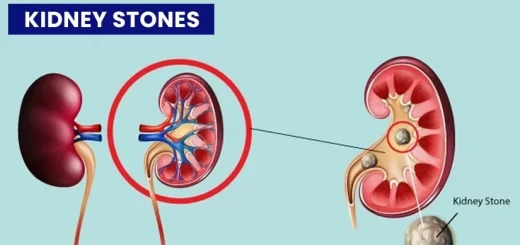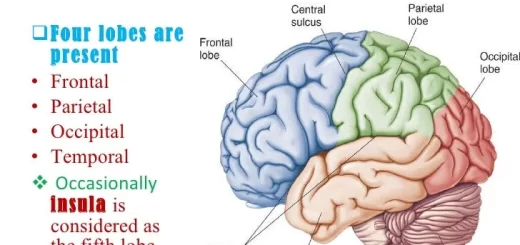Capillary circulation, Regulation of vasomotion, tissue formation and Edema types & causes
Capillaries are the smallest blood vessels in the body, they convey blood between the arterioles and venules. The capillaries contain only 5% of the circulatory blood, but this fraction is the most important part of the blood volume because the exchange across the capillary wall is essential for the survival of the tissues.
Flow of blood in the capillaries – Vasomotion
- The capillary blood flow is intermittent.
- The reason for this intermittency is a phenomenon called vasomotion, which means intermittent contraction of the metarterioles and precapillary sphincters.
Regulation of vasomotion
The concentration of oxygen in the tissues is the most important factor which affects the degree of opening & closing of the metarterioles and precapillary sphincters, When the rate of oxygen usage is great so that the tissue oxygen decreases, the intermittent periods of blood flow occur more often, and the duration of each period of flow lasts longer, allowing blood to carry increased quantities of oxygen (as well as other nutrients) to the tissues (metabolic autoregulation of blood flow).
Capillary tone
At any moment about 80% of the total capillaries in the body are completely closed and the open capillaries are not fully dilated. Capillary tone refers to the number of partially and totally closed capillaries. If all capillaries are to be open at any one time e.g. in burns or excessive histamine release, the vascular capacity will far exceed the blood volume leading to a marked drop in venous return, cardiac output, and arterial BP i.e. circulatory shock.
Equilibration with interstitial fluid
Fluid in the interstitium has almost the same constituents as plasma except for much lower proteins, as they don’t pass through the pores with ease. Diffusion, bulk flow, and vesicular transport are responsible for the exchange of materials across the capillary walls.
The diffusion is quantitatively much more important in terms of the exchange of the nutrients and waste material between blood and tissue than other methods of exchange. However, the net transfer of fluid across the capillary endothelium is mainly attributable to filtration and reabsorption (bulk flow).
Diffusion
Diffusion is the passive movement of the molecules from an area of high concentration to an area of low concentration. Oxygen and glucose are in higher concentration in the bloodstream than in the interstitial fluid and diffuse into the interstitial fluid, whereas CO2 diffuses in the opposite direction.
Bulk flow across the capillary wall
Net shifts of the fluid between the capillary & interstitial compartments are important for many physiological functions including the maintenance of circulating blood volume, tissue fluid formation, interstitial fluid absorption, and urine production, Net fluid movement out of the capillaries is referred to as filtration, and fluid movement into capillaries is called reabsorption.
Factors affecting bulk flow (Tissue fluid formation)
The rate of fluid movement at any point along a capillary depends upon a balance of forces (Starling forces), Four primary forces determine whether fluid will move out of the capillary into the interstitial space or in the opposite direction:
- Capillary hydrostatic pressure.
- Interstitial fluid hydrostatic pressure.
- Capillary colloid osmotic pressure.
- Interstitial fluid colloid osmotic pressure.
Forces favoring filtration
a) Capillary hydrostatic pressure:
- At the arteriolar end, it is about 37mm Hg.
- At the venous end, it is about 17mm Hg.
- However, these values differ in some organs according to their function. For example, in the renal glomeruli it is about 60 mm Hg; in the intestinal capillaries, about 10-20 mm Hg; in the liver, about 6 mm Hg and in the lung, 8 mm Hg.
- The capillary pressure is increased by precapillary dilatation and postcapillary constriction and vise versa.
b) Interstitial fluid colloid osmotic pressure: This pressure is close to 0 mm Hg due to the negligible amount of proteins in the interstitial fluid.
Forces favoring reabsorption
- Capillary colloid osmotic pressure: When a substance has a large molecule (e.g. plasma proteins), it is prevented from passing through the pores of the endothelial membrane. This substance creates an osmotic pressure inside the capillary. It is about 25 mm Hg caused mainly by albumin and to a lesser extent, globulin.
- Interstitial fluid hydrostatic pressure: This pressure varies from organ to organ. It is near 0-1mm Hg.
Analysis of forces at the arteriolar end:
- Forces tending to move fluid outward mm Hg
- Capillary pressure 37
- Interstitial fluid colloid osmotic pressure +0
- Total outward force 17
- Forces tending to move fluid inward
- Plasma colloid osmotic pressure 25
- Interstitial fluid pressure +1
- Total inward force 26
- Net force 37
- Outward -26
- Inward 11 (outward)
Analysis of forces at the venular end:
- Forces tending to move fluid outward mm Hg
- Capillary pressure 17
- Interstitial fluid colloid osmotic pressure +0
- Total outward force 17
- Forces tending to move fluid inward
- Plasma colloid osmotic pressure 25
- Interstitial fluid pressure +1
- Total inward force 26
- Net force 26
- Inward -17
- Outward 9 (inward)
The capillary hydrostatic pressure at the beginning of capillaries normally exceeds the capillary colloid osmotic pressure, whereas the reverse is true near the venous end of capillaries. Thus, there is normally net fluid filtration in the beginning portions of capillaries and net fluid reabsorption in the final portions.
Normally, the fluid filtered at the arterial end slightly exceeds the fluid reabsorbed at the venous end. The small excess is returned back to the circulation by the lymph vessels. The balance of Starling forces in some organs, however, is different. For example, the fluid moves out of almost the entire length of the capillaries in the renal glomeruli, On the other hand, fluid moves into the capillaries through almost their length in the intestines.
Normally, it has been estimated that about 24 liters of fluid are filtered through the capillaries per day. About 85-90% of the filtered fluid is reabsorbed into the capillaries, and the remainder returns to the circulation via the lymphatics. This lymph carries the albumin that escaped from the microcirculation.
Under abnormal conditions, the rate of filtration may exceed that of reabsorption, this results in tissue edema because of excess fluid in the interstitial spaces. In contrary, if more fluids are reabsorbed from the interstitial spaces into the vascular system, the interstitial fluid volume is decreased and the tissue cells are dehydrated.
Edema
Definition: Edema is the accumulation of interstitial fluid in abnormally large amounts.
Types: Generalized or localized.
Causes:
1. Increased filtration pressure:
When capillary pressure is increased, more fluid is filtered through the capillary wall. This occurs as a result of increased venous pressure such as in:
- Cardiac edema: due to right-sided heart failure.
- Venous obstruction: e.g. venous thrombosis (edema occurs distal to the obstruction). In pregnancy, edema of the lower limbs occurs due to the pressure of the gravid uterus on the veins.
- When one stands still for long periods or during long trips when travelers sit for prolonged periods with their feet in a dependent position, ankle edema develops due to the accumulation of fluid in the dependent parts due to the effect of gravity.
Salt and water retention: whenever there is an abnormal retention of salt in the body, water is also retained content.
2. Decrease osmotic pressure gradient across capillary:
- Decreased plasma protein level e.g. in liver disease (due to depressed hepatic synthesis of plasma proteins), kidney disease (due to loss of large amounts of proteins in the urine), and severe malnutrition.
3. Increased permeability of capillary walls:
- Localized tissue edema due to the leakage of plasma proteins through the capillaries during the inflammation and allergic reactions. (due to release of histamine, substance P, kinins, etc). This Decreases the osmosis of water into the venular ends of capillaries.
4. Inadequate lymphatic drainage:
- Filariasis: parasitic worms migrate into the lymphatics and obstruct them, Fluid accumulation leads to massive swelling, usually of the legs or scrotum (elephantiasis).
- Surgical removal of lymph nodes e.g. in breast cancer. This type of edema is called lymphedema and the edema fluid has a high protein content.
Regulation of blood flow, Renin-angiotensin vasoconstrictor system & Vasodilator hormones
Physiology of the circulatory system & How does the circulatory system work
Blood vessels structure, function, layers, characteristics & How blood vessels work
Anatomy of the circulatory system, Vascular system, Arteries of head and neck



